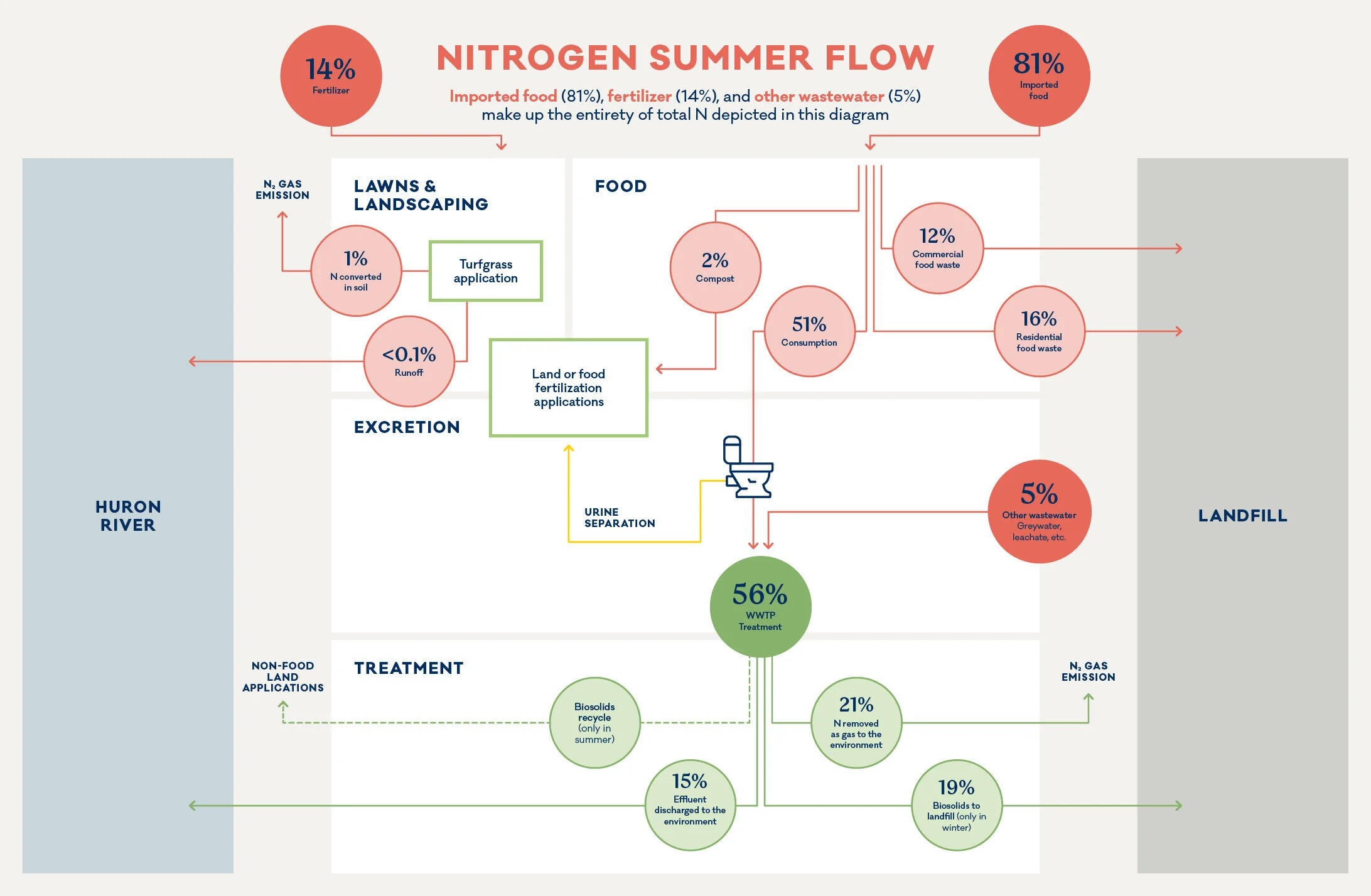Nutrient recovery techniques such as urine diversion create a “circular economy” by recycling nutrients, reducing demand for energy-intensive synthetic fertilizers.
However, to gain a clear picture of the potential benefits of nutrient recovery and increased nutrient cycling, existing nutrient flows and their inefficiencies must be understood, including where and how nutrients enter and leave a system. To this end, a mass balance approach was used to calculate the flow of nitrogen and phosphorus through the City of Ann Arbor.
The calculations considered city-specific flows such as food production and consumption, lawn fertilization, and wastewater treatment. The effect of urine separation on the wastewater treatment plant and the potential for nutrient recovery through urine separation, food composting, and biosolids recycling were also calculated.




